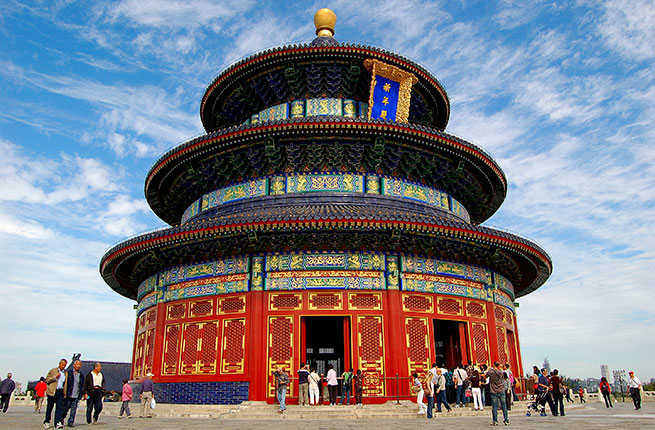
What can you see in China
China is an awesome place if you are looking for adventure and ancient history feeling. China’s largest and most important building, the Forbidden City – also known as the Imperial Palace – is situated in the very heart of Beijing and is a must-see when visiting the country. Started during the Yuan Dynasty between 1271-1368, much of the complex seen today (it’s really many splendid palaces in one) was built between 1406 and 1420 as the residence of 24 Ming and Qing Emperors, whose presence forbade the entry of anyone other than the imperial family and their courtesans. Covering some 720,000 square meters and protected by a 10-meter-high wall with watchtowers and a wide moat, this massive complex consists of areas set aside for ceremonial and administrative purposes, as well as a private residence used by the emperor.
While it can take many hours to see everything, highlights include the five white marble Golden River Bridges; the Hall of Supreme Harmony, a 35-meter-tall building housing the imperial throne; the exquisite emperor’s banquet hall (the Hall of Preserving Harmony); and the Palace Museum with its large collection of art and artifacts from the Ming and Qing dynasties, to name but a few. Other important attractions in the vicinity of the Imperial Palace include famous Tiananmen Square, and the Temple of Heaven, one of the country’s most important religious sites, which dates back to the 15th century.
Mt. Emei is home to the first Buddhist temple in China, built in the first century. But the most remarkable of the Emeishan Buddhas is the Leshan Great Buddha that was carved out of a hillside in the eighth century. The statue stands about 71 meters (233 feet) high and has three-meter (11 feet) long fingers on each of its enormous resting hands. The Giant Buddha ended up making the raging rivers below more navigable as stone remnants from the statue were dropped into the water. One of China’s major tourist destinations, Mount Huang is a mountain range in eastern China also known as Huangshan (“Yellow Mountain”). The area is well known for its scenery, sunsets, peculiarly shaped granite peaks and views of the clouds from above. Frequently shrouded in mist, the many peaks appear to float on clouds and have very fanciful names such as 18 Arhats Worshipping the South Sea, Lotus Flower Peak, Celestial Capital and Paint Brush. In ancient times almost 60,000 stone steps were carved into the side of the mountain range. Today there are also cable cars that tourists can use to ride directly from the base to one of the summits.
The Mother River of the Chinese Nation, the Life-blood of China, mighty Yangtze is the largest and longest river in China with a length of over 6,300 kilometres. It is a curious blend of the grand natural scenery and brilliant human culture. Flowing through 9 provinces, this ‘Travelling-Through-the-Heavens’ River, finally pouring into the East China Sea through Shanghai. Section between Chongqing and Yichang are the magnificent one. Take a comfortable Yangtze River Cruise, you will have chance to appreciate the magnificent Three Gorges, which are regarded as one of the most spectacular scenic attractions in China, and all powerful Three Gorges Dam. See more details on China expedition tours.
Echoing Sand Mountain is a series of dunes surrounding Crescent Lake. Named for its distinctive shape and aural characteristics, its echoes can be heard as the wind blows over the dunes. Visitors ride camels up the dunes, which rise to 250 meters. With gardens blooming on its banks, Crescent Lake offers a lovely visual counterpoint to all that sand. Echoing Sand Mountain and Crescent Lake is six kilometers south of Dunhuang. China Southern operates a daily return flight between Xi’an Xianyang Airport and Dunhuang Airport. Air China flies between Beijing and Dunhuang once a day.